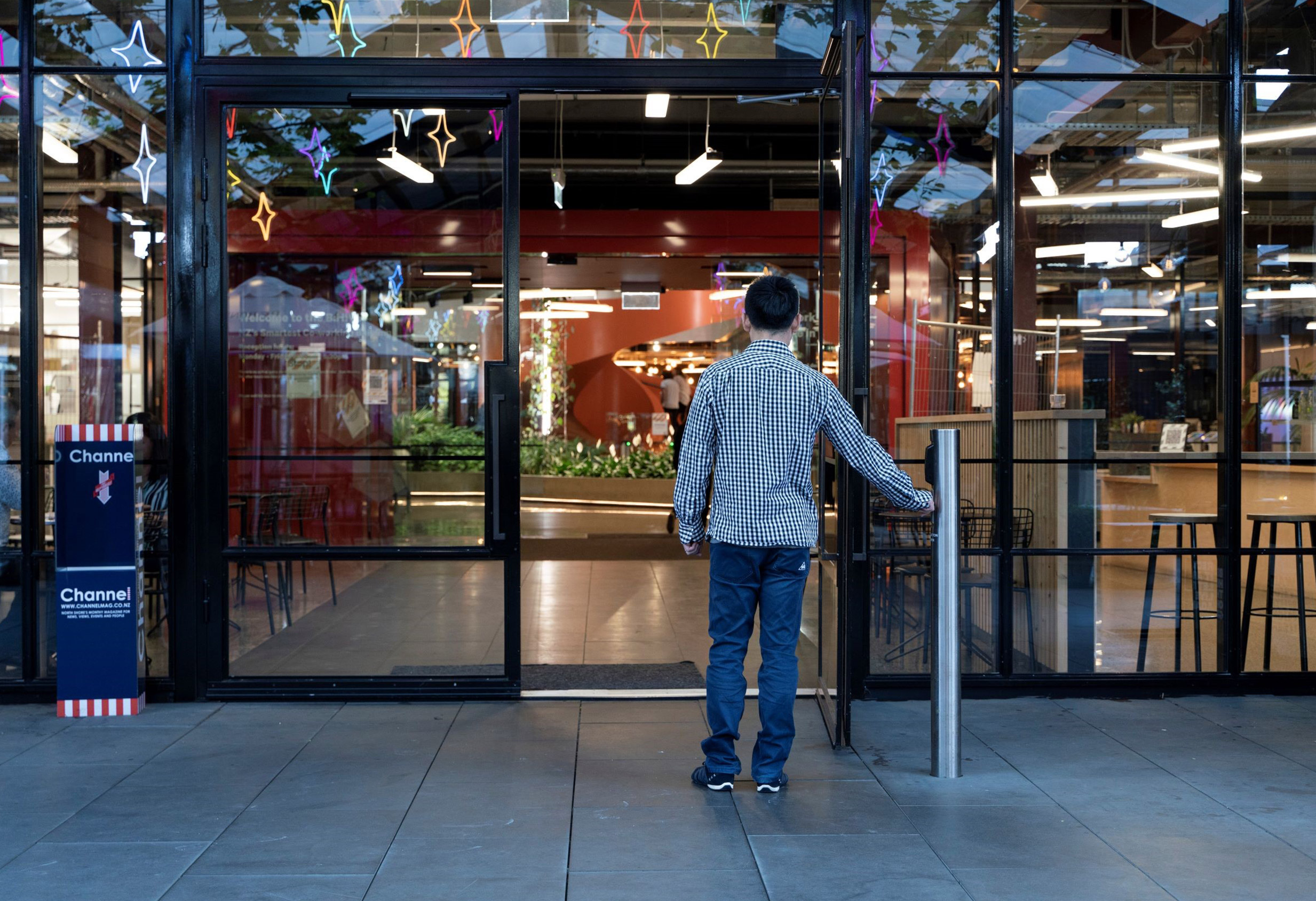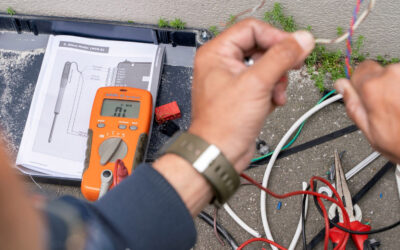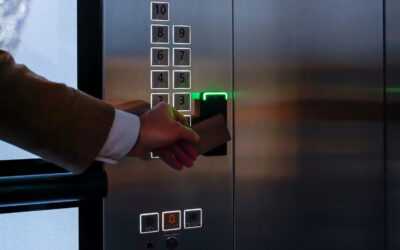Integrated security systems represent a concerted effort to streamline and bolster the security measures within an organisation or property. At the heart of this concept lies the integration of various security components such as Closed-Circuit Television (CCTV) cameras, access control and alarms into a unified framework. This integration is orchestrated by physical security specialists or security integrators, with the primary goal of creating a comprehensive security solution that is greater than the sum of its individual parts.
A fundamental advantage of integrated security systems is the holistic security approach they promote. By integrating CCTV, access control, and alarms, a multi-layered security strategy is forged, making it significantly more challenging for criminals to breach the protective measures in place. CCTV cameras play a pivotal role in real-time monitoring, offering a watchful eye over premises and enabling swift responses to security incidents with visual cues. Their integration into the security infrastructure amplifies the surveillance capabilities, deterring potential threats and providing an enhanced level of vigilance.
Gates, on the other hand, serve as a physical barrier to control access and ensure perimeter security. They act as the first line of defence against unauthorised access, with integrated systems enhancing their functionality by allowing for real-time monitoring and control. Alarms further augment the security matrix by triggering alerts in the event of unauthorised access or other security threats. The synergy between these components under a centralised control system augments the efficiency and effectiveness of the security measures in place.
The rising security concerns in today’s world underscore the importance of a robust and responsive security infrastructure. Integrated security systems address these concerns by offering a more comprehensive coverage, improved data management, and a customised security solution tailored to address specific security concerns of a property. A unified framework not only simplifies management but also significantly elevates the level of security, providing a robust shield against a myriad of security threats. Through a lens of enhanced monitoring, access control, and swift alert systems, integrated security systems epitomise a modern, efficient, and highly effective approach to security management.
As the spectre of security threats looms larger, the adoption of integrated security systems emerges as a prudent strategy to navigate the complex security landscape. They encapsulate a forward-thinking approach to security, aligning with the evolving threat dynamics and offering a solid foundation to build a secure and resilient environment.

Holistic Security and Enhanced Monitoring
The modern security landscape is complex, necessitating a comprehensive approach to ensure the safety of both assets and individuals. A comprehensive security approach, underpinned by the integration of CCTV, access control, and alarms, serves as a robust defence mechanism against a myriad of security threats. This integrated approach amalgamates the unique benefits brought forth by each component, creating a synergistic security matrix that significantly bolsters overall security measures.
At the forefront of this integrated security model is the deployment of Closed-Circuit Television (CCTV) cameras. These devices play a pivotal role in real-time monitoring, offering a visual vantage point to security personnel for continuous surveillance. Their presence serves as a deterrent to potential intruders, while their monitoring capabilities provide real-time alerts in the face of security breaches. The beauty of integration emerges when the CCTV systems are harmonised with other security components. For instance, the real-time monitoring capability of CCTV cameras can be linked with access control systems to promptly identify and respond to unauthorised access attempts, such as tailgating events, where one authorised person is closely followed by one or more unauthorised individuals.
Access control, epitomised by the deployment of locks, gates and related mechanisms, stands as the first line of defence against unauthorised access. It manages who goes in and out of a premise, ensuring that only authorised individuals gain entry. The integration of access control with CCTV systems creates a robust framework for monitoring and managing access, allowing for real-time event correlation and immediate response to unauthorised access attempts. When an unauthorised access attempt is detected, the integrated system can trigger alerts, activate cameras, and initiate appropriate actions such as locking doors or dispatching security personnel, thereby preventing unauthorised access from escalating into security incidents.
The integration further facilitates centralised monitoring, providing a unified view of access control events, video feeds, and alarms. This centralised approach simplifies monitoring, enables efficient incident management, and ensures that potential security threats are promptly identified, assessed, and addressed. Moreover, the integrated system streamlines security operations, reducing manual processes and enhancing the efficiency of security personnel by allowing them to manage access control, video surveillance, and alarms from a single interface. This serves to minimise the risk of human error, save time, and enhance the overall efficiency of the security setup.
Real-life scenarios further underscore the effectiveness of this integrated approach. For instance, an office building with an integrated security system that combines access control, CCTV cameras, and alarm systems can promptly respond to unauthorised access attempts. The moment an unauthorised access attempt triggers an alarm, the integrated system alerts security personnel, enabling a swift response to prevent further unauthorised entry. Similarly, retail stores and university campuses benefit immensely from integrated security systems, allowing for real-time monitoring, immediate response to security incidents, and enhanced overall security management.
Through the lens of holistic security and enhanced monitoring, the integration of CCTV, gates, and alarms unveils a modern, efficient, and highly effective strategy for managing security in today’s intricate safety landscape. This comprehensive approach not only addresses the prevailing security concerns but also lays a solid foundation for a secure and resilient environment, well-geared to navigate the evolving threat dynamics.


Cost-Effectiveness, Efficiency, and Ease of Management
Integrated security systems offer a slew of advantages over standalone ones, particularly in terms of cost-effectiveness, efficiency, and ease of management. By combining multiple security elements such as video surveillance, access control, and intrusion detection into a single solution, integrated systems allow for more streamlined operations. They provide a more thorough solution for business protection, with all operations being more streamlined. Access control and video surveillance are usually managed through a single desktop or smartphone monitoring tool, with both hardware and software working in tandem to secure premises.
Integrated systems are easier to manage. Their seamless integration facilitates efficient operation, comprehensive coverage, and straightforward management. Usually, integrated systems can be accessed, monitored, and managed from a single program, which can help reduce false alarms among other benefits. This integration not only enables remote access and real-time monitoring but also expedites the identification and resolution of security incidents. Additionally, integrated systems are typically easier to update and maintain, and they allow for the identification of patterns and trends in a more efficient manner.
Cost-effectiveness is another significant benefit of integrated security systems. Although they may entail a higher upfront cost, they more than pay for themselves over time by improving the security and protection of the entire facility. The efficiency, protection, and extra benefits of integrated security systems contribute to these savings. For instance, the added protection and reduced liabilities offered by integrated systems might lead to savings on insurance premiums. The initial investment in security system integration and the ongoing maintenance are necessary investments for any facility, providing financial benefits in the long run.
In essence, the amalgamation of various security systems into an integrated one is not just a measure to enhance security but a smart move towards achieving operational efficiency, ease of management, and long-term asset management. Through a single interface, business owners or security personnel can have a bird’s eye view of all security aspects, ensuring a quick response to any security threats thereby justifying the initial investment in the integrated system.
Building Compliance and Evidence Gathering
Security systems play a crucial role in facilitating building compliance and evidence gathering. CCTV footage, for instance, is a pivotal resource in legal proceedings as it can provide clear evidence of incidents such as trespassing, theft, or other criminal activities. The recorded visual evidence helps in verifying events, identifying individuals involved, and establishing timelines essential for legal processes.
The alarm systems within integrated security setups are instrumental in alerting authorities during security breaches or other emergencies. When unauthorised access or other security threats are detected, alarms are triggered, notifying security personnel or local authorities, thereby ensuring a swift response to mitigate the threat. This rapid alert system not only bolsters the security posture but also aids in legal compliance by ensuring that necessary steps are taken to address evacuation requirements in accordance with the building codes and practices.
Integrated security systems provide structured frameworks for evidence collection, crucial for demonstrating compliance with building compliance, data protection and security standards. For instance, certain frameworks necessitate the collection of evidence to ensure businesses meet their compliance obligations. Integrated security systems help automate this process, ensuring timely evidence collection, well-documented, and easily retrievable for audits or inspections.
Integrated security systems, with their capabilities in real-time monitoring, alerting, and evidence collection, furnish a robust framework for building compliance and evidence gathering. By seamlessly blending various security components, they enable businesses to adhere to legal requirements, respond promptly to security threats, and ensure safe processes in an emergency event.





